What is the role of Swiss military observers?
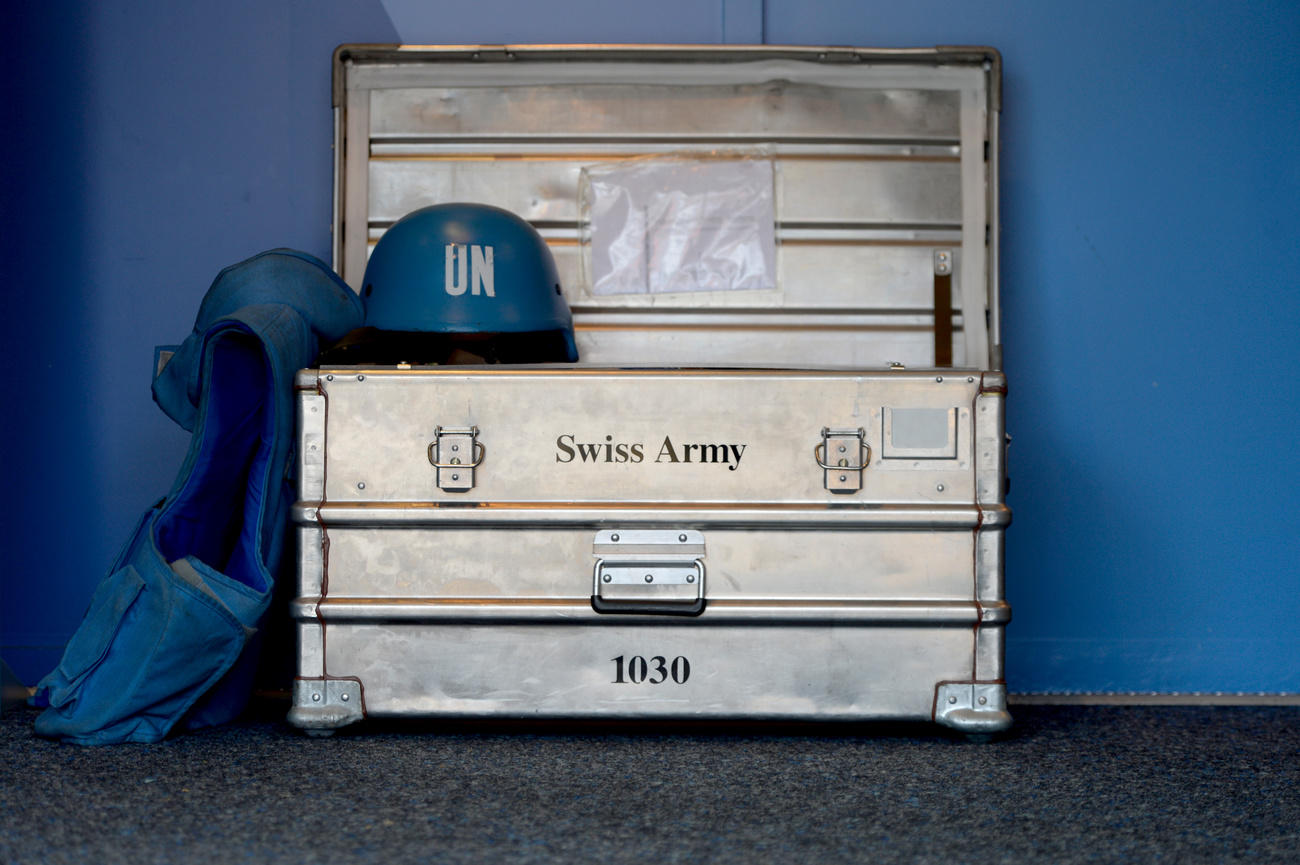
In 1990 Switzerland sent military observers to work in a United Nations peacekeeping mission for the first time, a move that sparked debates in the neutral nation. Here’s a look at the history.
In 1990 Switzerland contributed to a UN-peacekeeping mission for the first time. Thirty years later, some 27 Swiss military observers and support staff are active in missions around the world: in the Middle East (13), Democratic Republic of the Congo (2), South Sudan (1), Mali (6), Kashmir (3) and Western Sahara (2).
May 29 is the International Day of UN PeacekeepersExternal link, an annual day dedicated to the work of soldiers and personnel deployed in conflict zones and working to further peace.
The Swiss army officers who take part in these UN missions are unarmed. The tasks of the so-called “blue berets” and liaison officers include the monitoring of ceasefire agreements and acting as go-between for conflict parties. Staff officers are also deployed as military specialists, for example in mission headquarters.
Peace promotion at the international level is one of the three priority tasks of the Swiss army, and is anchored in military law. However, the deployment of armed “blue helmet” officers is not allowed.
Mark Styblo has been working with UN missions for some 20 years, patrolling, observing, discussing, and reporting. At the end of June, he is likely to be on the move again, to work for a year as an observer in the Kashmir region.
Chronology
Since 1953 Swiss army officers have been stationed at the border between North and South Korea – albeit not in the framework of a UN peace mission.
Until the 1980s Switzerland – which joined the UN in 2002 – supported missions financially. However, in 1988 the government decided to authorise plans to also deploy personnel to the peace operations.
A year later the government took the decision to support missions with military observers, and in 1990 the first deployment took place, with soldiers being sent to the UN’s oldest mission: the Truce Supervision Organisation (UNTSO)External link in the Middle East.
Due to the growing complexity of global conflicts, and thus the UN missions developed to tackle them, Switzerland began to later send liaison and staff officers – the first time being in Burundi in 2007.
Swiss army officers have since participated in 19 UN peacekeeping operations, including the six ongoing mandates (see above, as well as the graphic).
And since 2004 the SWISSINT centre has been at the heart of peace promotion missions of the Swiss army abroad. SWISSINT have a training centre which prepares future military observers and liaison officers from around the world, during a five-week course, to take up their tasks and to understand UN standards.
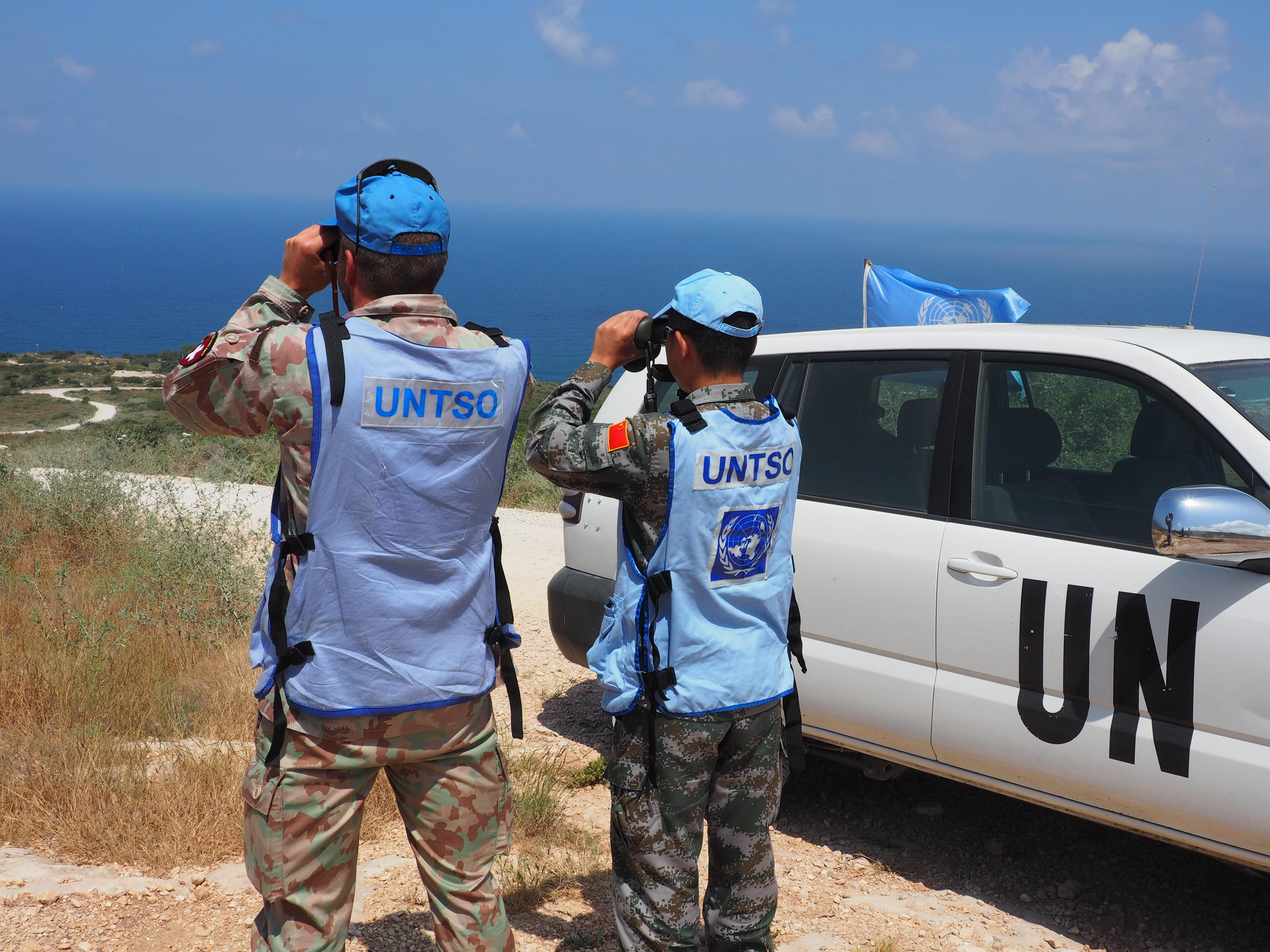
Neutrality
All deployments of the Swiss army in peacekeeping missions are based on a corresponding UN mandate. The agreement by the parties involved in conflict is also necessary so that the UN mission can be set up in the first place. Recruitment for such a mission on the Swiss side is done voluntarily.
Opinions are divided as to whether Swiss officers in a UN mission should be armed. In 1994, the so-called “Blue Helmet LawExternal link”, which would have allowed Swiss officers to take part both in UN and OSCE missions, was roundly rejected by Swiss voters.
Today, Swiss officers are deployed as blue berets, who are unarmed. The armed side of the missions, the blue helmets, do not include Swiss personnel.
As for NATO missions, parliament must give its consent for armed Swiss soldiers to participate, according to a 2001-revised military law (article 66). And with participation in combat or peace enforcement missions forbidden, such arming would be for self-defence purposes only.
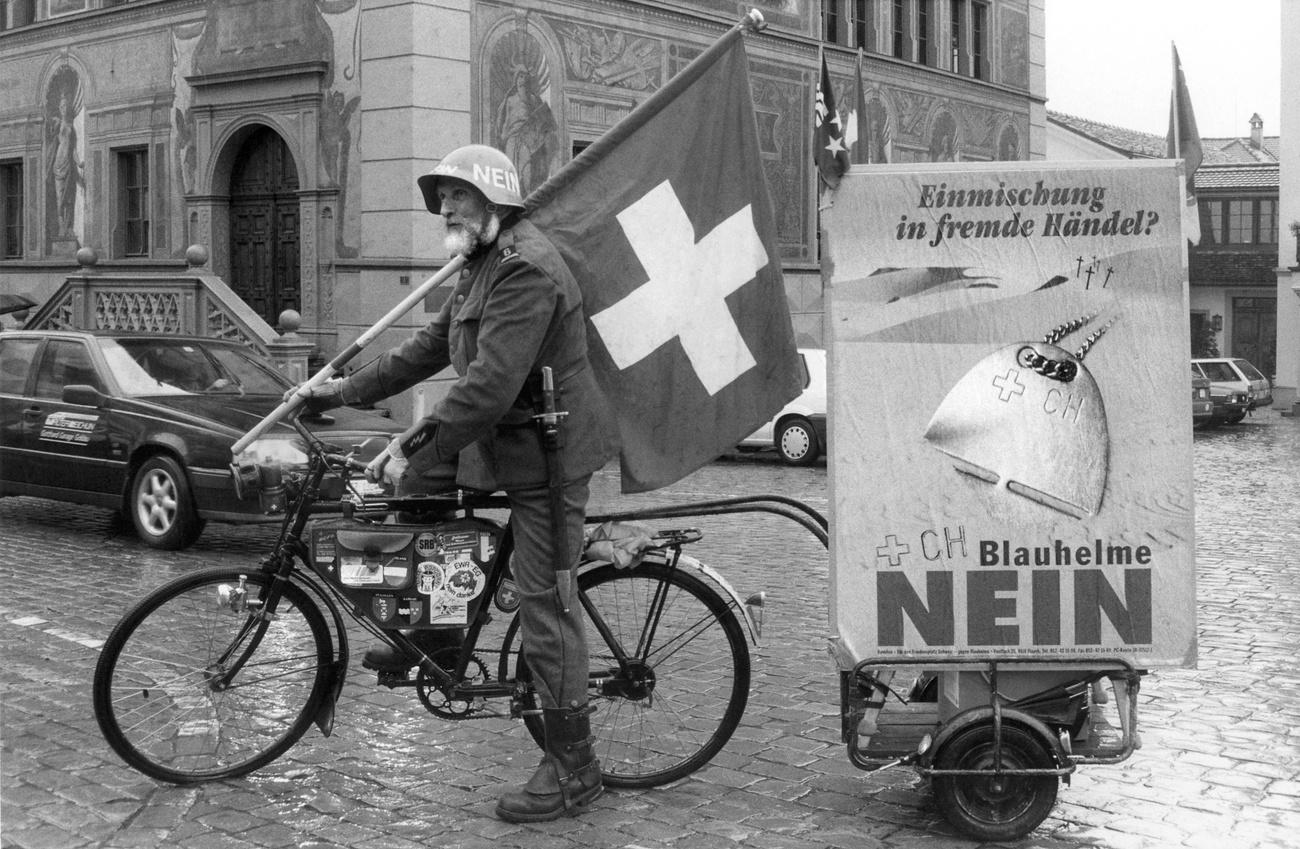
Militia army
The Swiss army is organised according to militia principles: a mix of civil and military knowledge that is an advantage for UN peace missions, “especially when it comes to contact with local populations”, says Mirco Baumann, communications chief at SWISSINT.
The drawback to the militia system, however, is that there are hardly any women officers in the Swiss army, says Baumann. In Switzerland, there is no obligatory military service for women. However, when it comes to peace missions, women are at least as important as men, especially since in many parts of the world it remains the case that “women only speak with other women”.
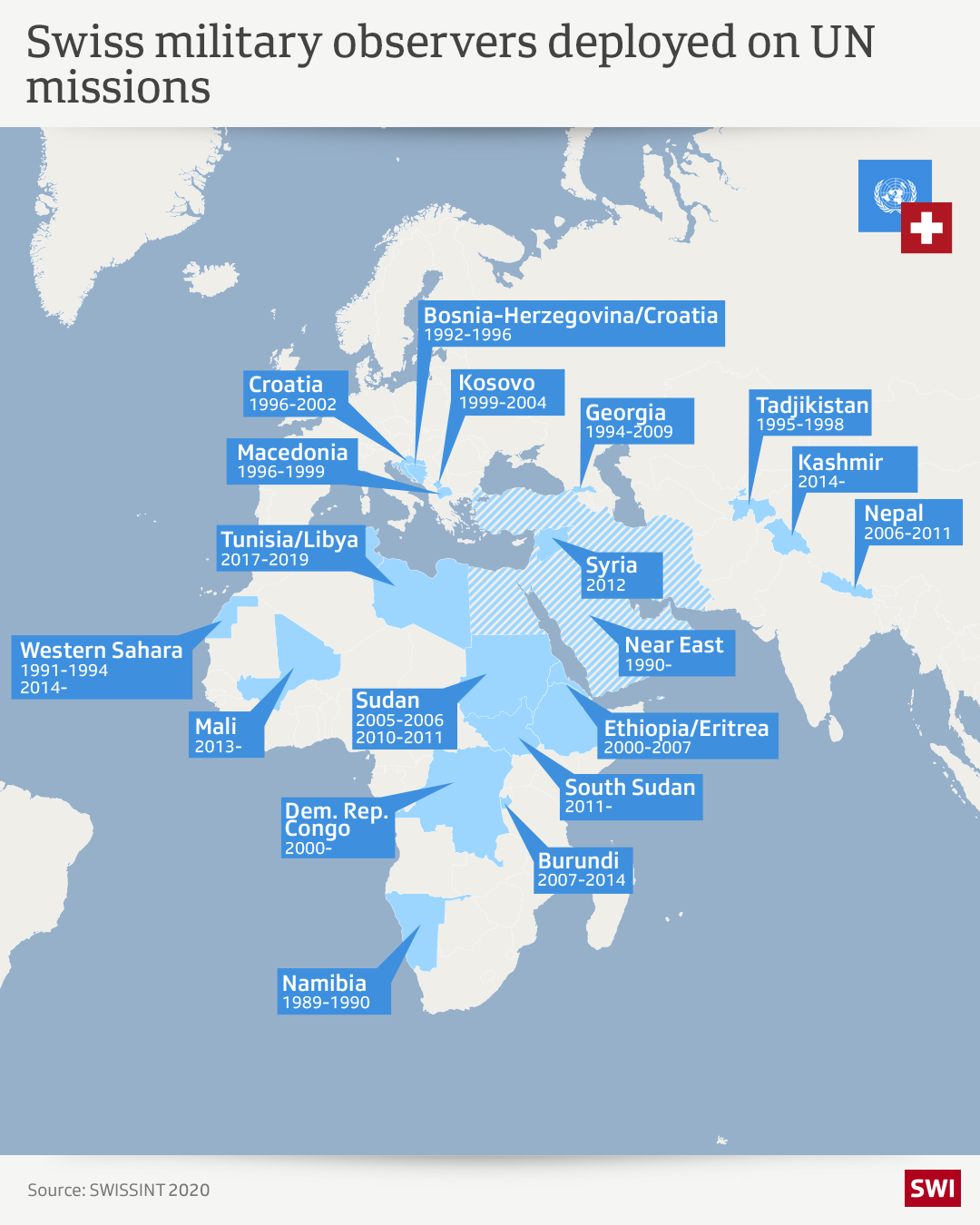

In compliance with the JTI standards
More: SWI swissinfo.ch certified by the Journalism Trust Initiative

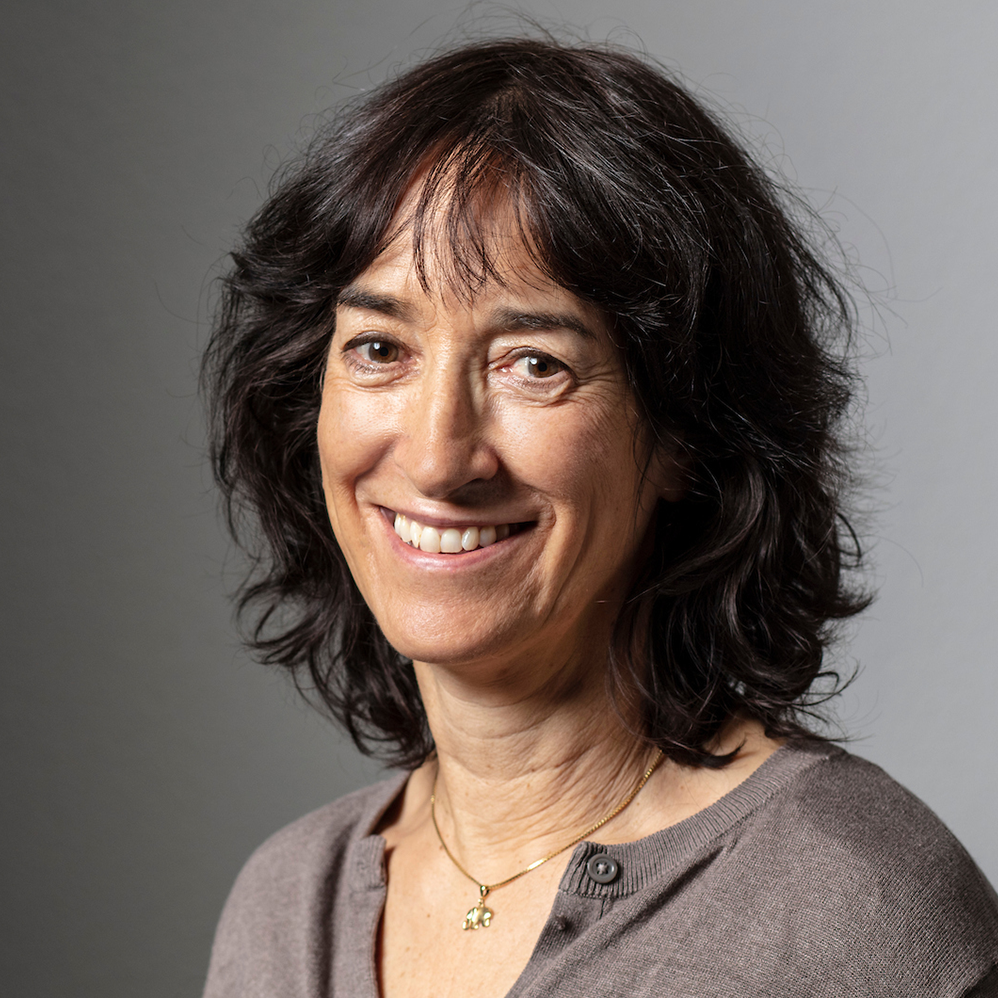
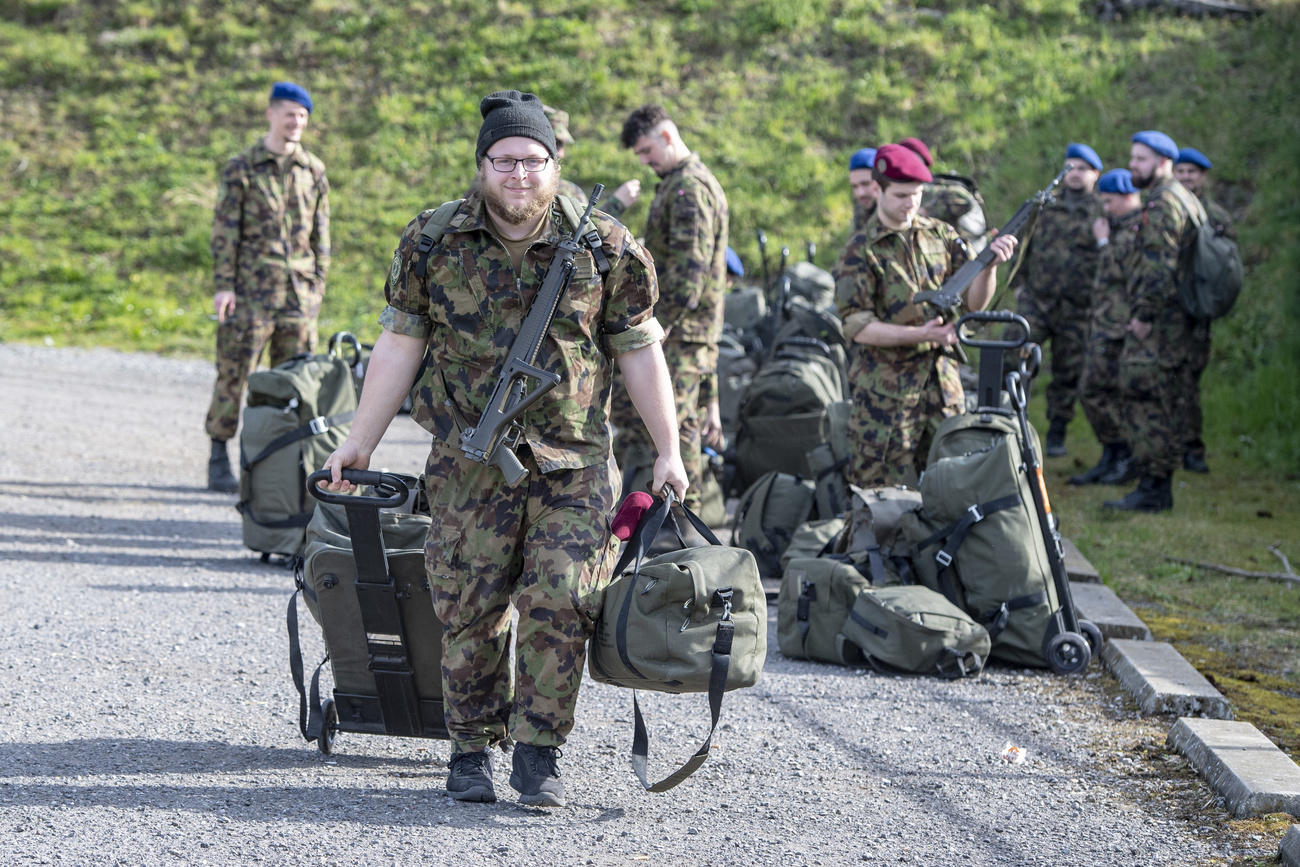
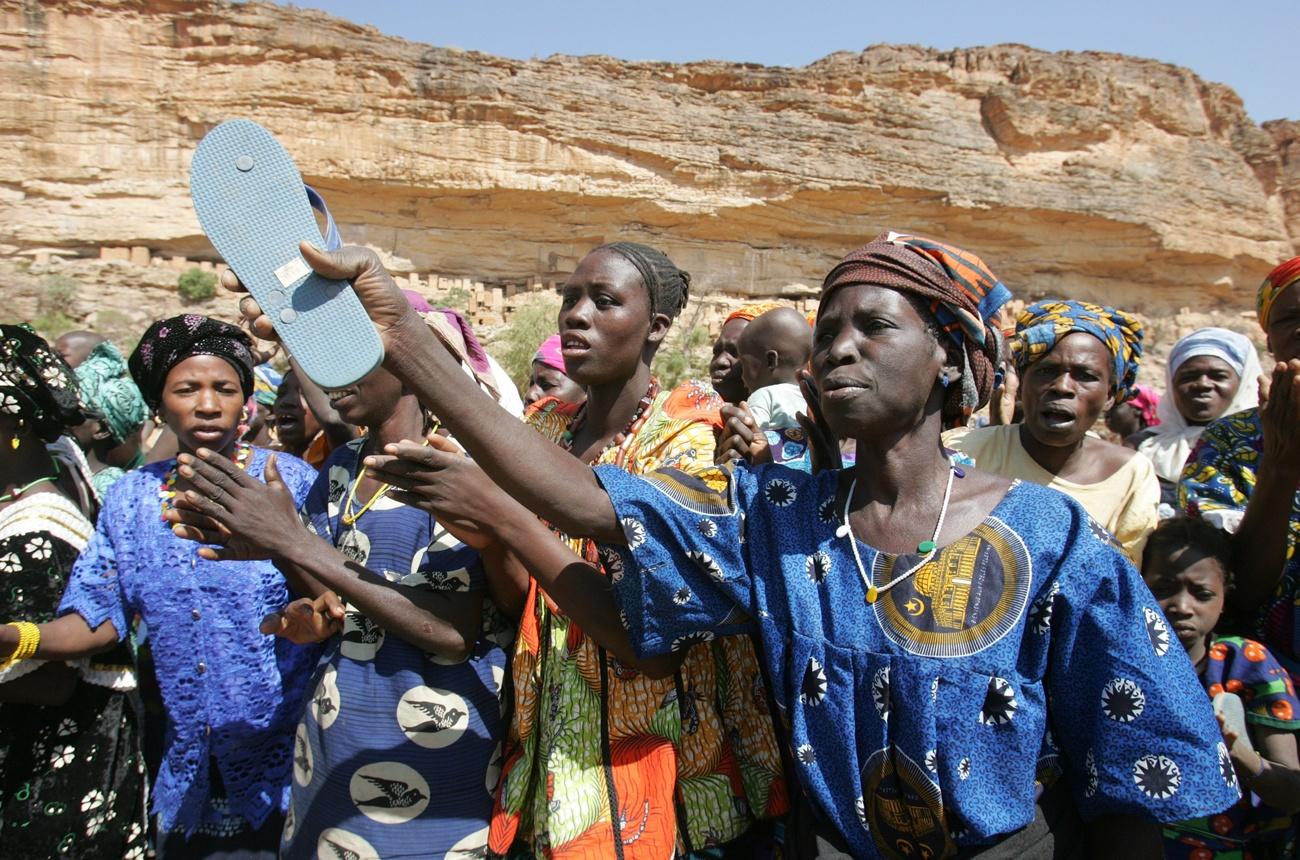
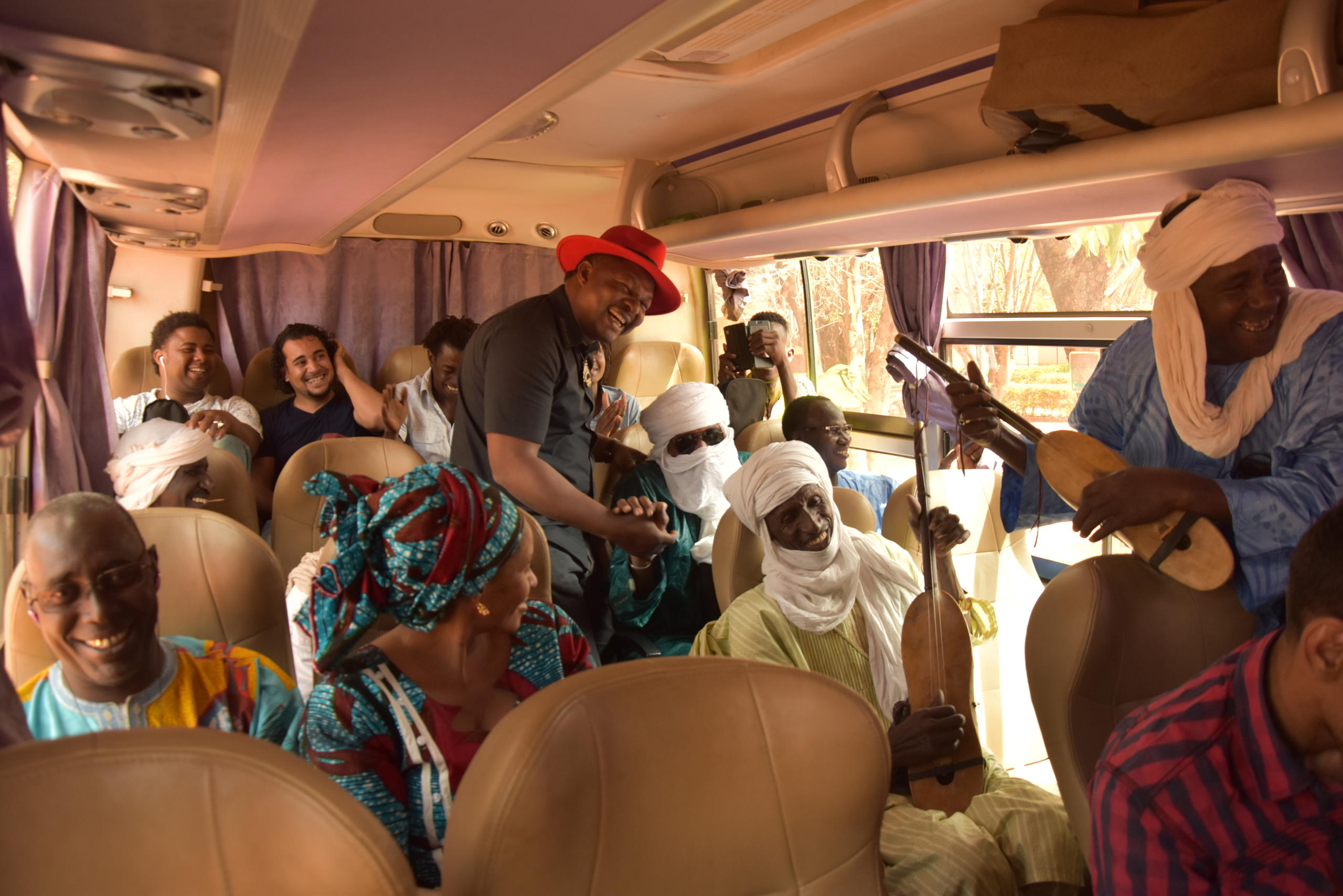
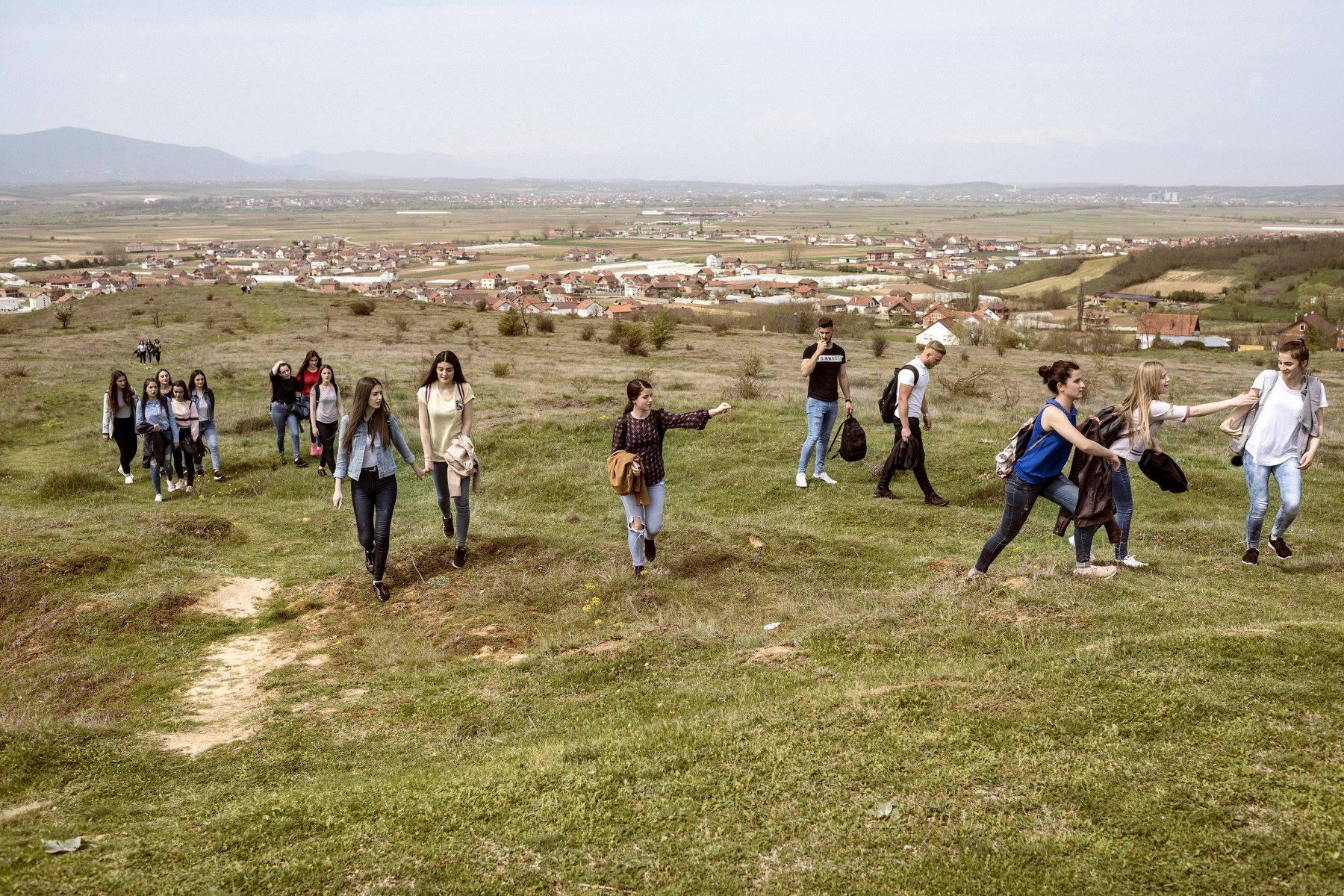
You can find an overview of ongoing debates with our journalists here. Please join us!
If you want to start a conversation about a topic raised in this article or want to report factual errors, email us at english@swissinfo.ch.